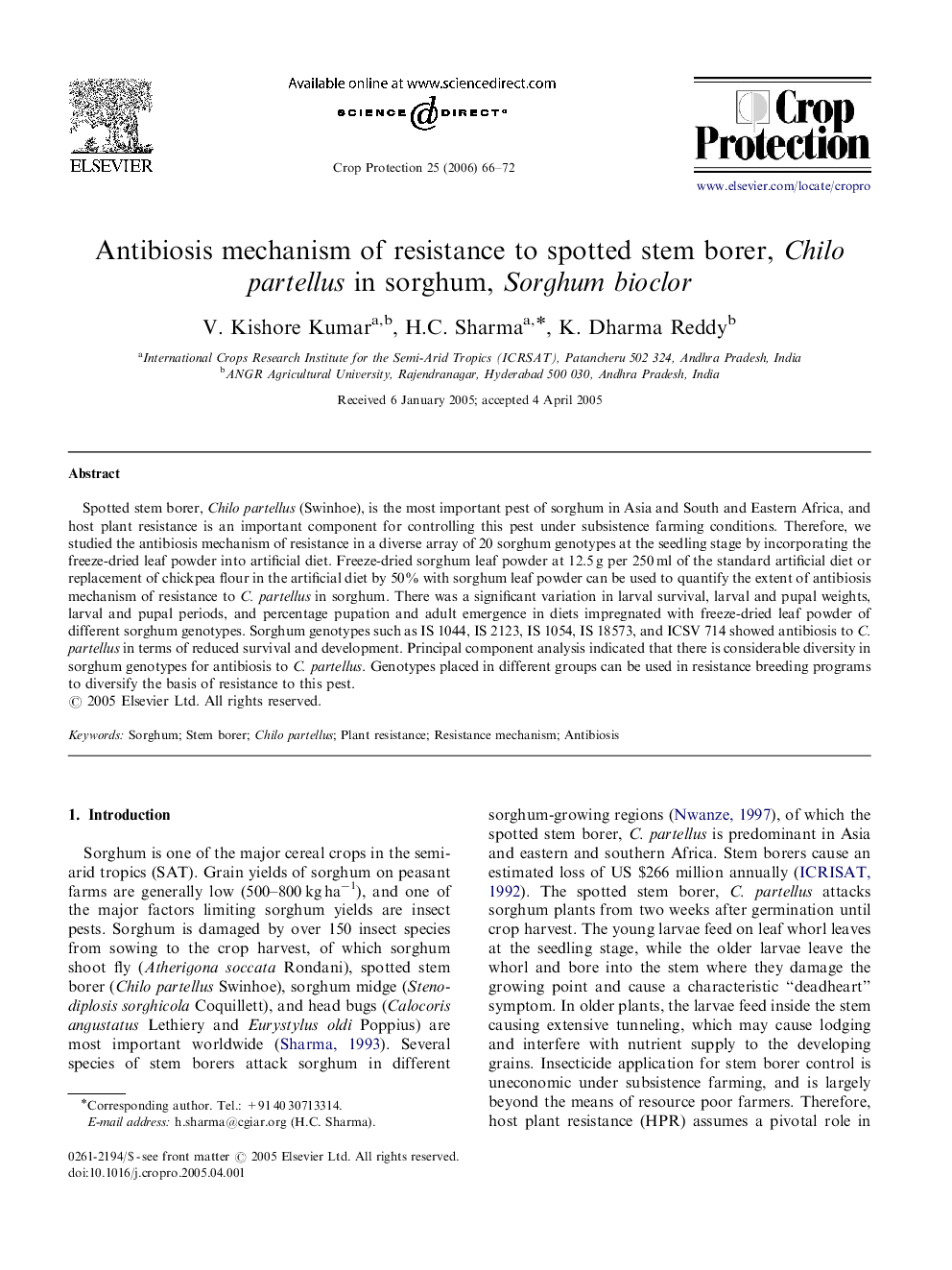| Article ID | Journal | Published Year | Pages | File Type |
|---|---|---|---|---|
| 4508144 | Crop Protection | 2006 | 7 Pages |
Spotted stem borer, Chilo partellus (Swinhoe), is the most important pest of sorghum in Asia and South and Eastern Africa, and host plant resistance is an important component for controlling this pest under subsistence farming conditions. Therefore, we studied the antibiosis mechanism of resistance in a diverse array of 20 sorghum genotypes at the seedling stage by incorporating the freeze-dried leaf powder into artificial diet. Freeze-dried sorghum leaf powder at 12.5 g per 250 ml of the standard artificial diet or replacement of chickpea flour in the artificial diet by 50% with sorghum leaf powder can be used to quantify the extent of antibiosis mechanism of resistance to C. partellus in sorghum. There was a significant variation in larval survival, larval and pupal weights, larval and pupal periods, and percentage pupation and adult emergence in diets impregnated with freeze-dried leaf powder of different sorghum genotypes. Sorghum genotypes such as IS 1044, IS 2123, IS 1054, IS 18573, and ICSV 714 showed antibiosis to C. partellus in terms of reduced survival and development. Principal component analysis indicated that there is considerable diversity in sorghum genotypes for antibiosis to C. partellus. Genotypes placed in different groups can be used in resistance breeding programs to diversify the basis of resistance to this pest.
